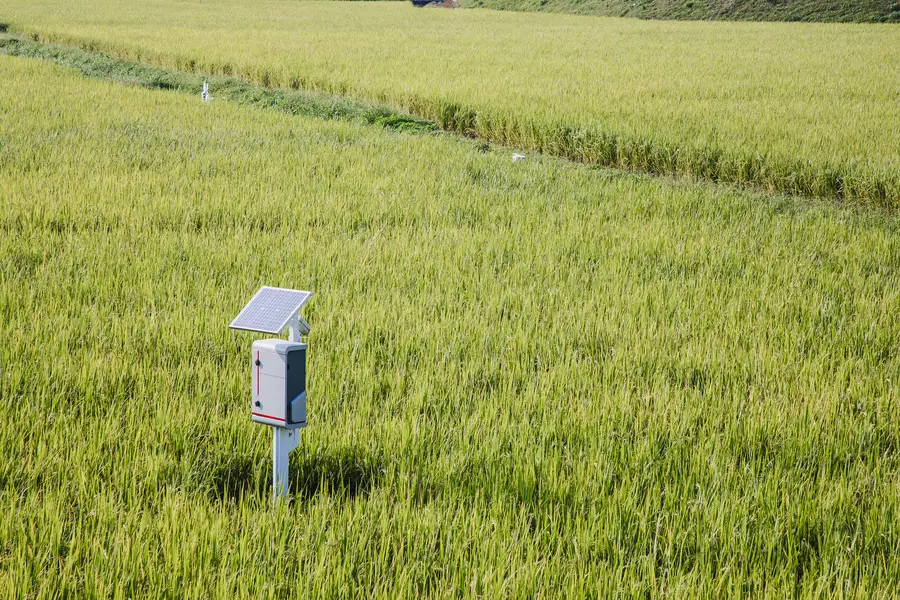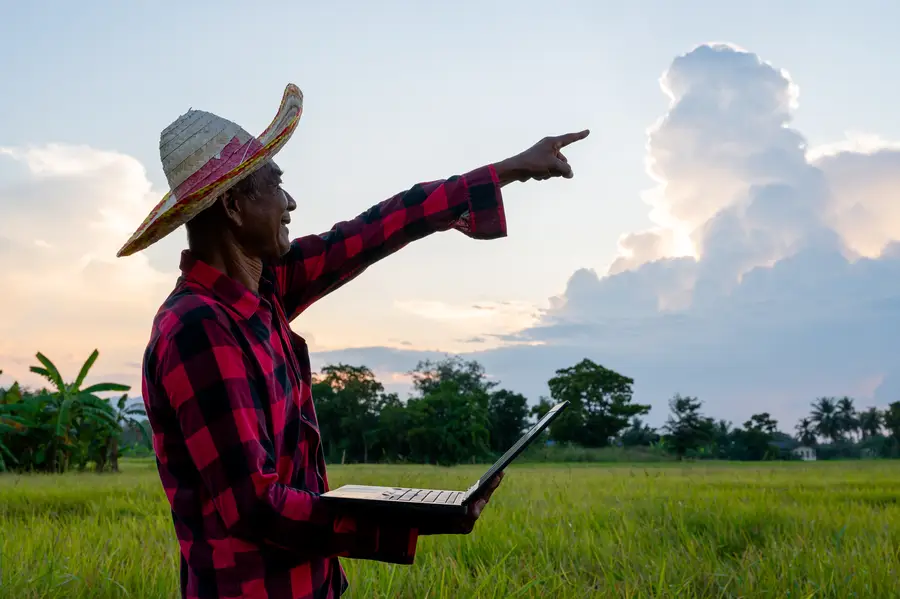5G Farming is a Vital Step for the World
Farmers are getting a new tool in their sheds, and it’s not what you might expect. The internet has revolutionized the food industry, with everything from online grocery shopping to health and nutrition apps. Now, internet connectivity is coming to the fields. The advent of 5G, the newest and fastest mobile technology, could make it easier for farmers to manage their crops. 5G will connect farms with auxiliary technologies such as drones, Virtual Reality (VR), and Internet of Things (IoT) sensors.
We are discovering the full scope of 5G’s capabilities at a crucial time when the global population is being threatened by resource scarcity. 5G farms could significantly reduce waste by removing inefficiencies in the agri-food industry, thereby saving space, time, and natural resources, and alleviating some of the current environmental burden.
The 5G Difference
5G stands for the 5th generation technology in internet connectivity; it is a network that facilitates data transmission between devices and applications. The Washington Post describes 5G as a highway that transports data faster and over a shorter distance than previous generations such as 4G and 3G. Compared to the latest 4G connection, 5G is more robust, receiving and sending data at faster speeds, and has greater flexibility in function because it works closer to the local end device (data source). 5G computes data using edge technology. With a shorter distance for data to travel, 5G boasts significantly lower latency (interference in data transfer). Additionally, in crowded areas, you’ll still be able to upload and download data quickly because of 5G’s large data capacity. For farmers, this means several automated, data-monitoring devices can operate in the fields simultaneously without crippling lag. 5G also boasts data transmission speeds of up to 10 times faster than 4G, due to the higher frequency that 5G can access. Connecting to a 5G network is like catching a jet stream or using the highway analogy – it’s like taking the express lane. With its powerful, transformative capabilities, 5G will meet the increasing demands of new technologies like VR and Artificial Intelligence (AI), the latest tools for crop management.
5G's Green Thumb Optimizes Farming
Farmers are constantly making decisions, both short-term and long-term, to manage their farms. Paired with smart technologies like AI, 5G can help at every level of farm management from monitoring to strategic planning. The idea of a farm as a cyber-physical management system (CPMS) is one that has gained traction with the ongoing integration of drones, sensors, and autonomous robots in various industries. CPMS is not as daunting as it may first seem; it’s simply the connection of various farm operations and the farmer to the internet.
To monitor crop health, sensors can be used to collect data on the soil, irrigation levels, and other critical factors. Drones or land-roving robots with thermal infrared imaging and other sensory capabilities can capture data on soil temperature and water levels. This data will then be sent to a processing system, which uses the information to decide the appropriate action to take. Decisions like slowing the rate of irrigation can be made from one central hub and then implemented across the entire field. This is an example of variable-rate irrigation (VRI) in which the irrigation schedule is optimized to reduce water waste, soil erosion, and crop stress from excess water intake. VRI and other dynamic mechanisms are dependent on real-time data transmission, which has not been feasible until the emergence of 5G.
Field Study: Using 5G and AI to Create a Climate-Smart Solution
In the Netherlands, a powerful 5G autonomous robot is helping solve the nation’s potato weed problem through targeted weed-elimination. Unwanted potato plant growth from the prior harvest can threaten the health of the sugar beet crop, a major Dutch export. A team led by the Dutch mobile telecommunications company, KPN, has created a robot that utilizes 5G connection to identify and eliminate weeds.
The robot uses a camera to take pictures of plant matter in the field. Using 5G, these images are uploaded to a cloud edge system with deep-learning capabilities, which enables it to distinguish between the potato weed and the sugar beet crop. The use of an off-site image processing unit is an advantage, requiring less electrical and processing power from the robot. If the algorithm identifies a weed in the image, a precision sprayer receives a signal to apply herbicide to that spot. Thanks to 5G, all of this happens in real-time with the full operation taking about 250 milliseconds.
Only 5G has a large enough bandwidth to support this digital infrastructure without compromising speed. The 2020 report published by KPN found the robot to be 95% accurate, and its speed significantly outpaced manual workers at a rate of 1/3 hectare per hour. By reducing time, labor, and harmful pesticide output, the 5G autonomous robot is not just an efficient solution, but a sustainable one as well.
5G is also powering meta-analysis technologies that can be implemented to plan more sustainable, climate-smart farms. Drones and ground-based sensors gather data on the topography of farmland, and that data is run through advanced systems to determine if the area is suitable for farming. It may also give farmers insight on the contour and composition of the land, which helps them design farms that preserve the land’s natural properties.
The high-speed feedback that 5G provides could also help monitor farm machinery for failing parts or automate refueling based on a machine’s fuel status. This kind of advanced predictive maintenance keeps farm equipment running smoothly and reduces costs in the long run. Finally, many have been looking forward to the integration of 5G in AR (augmented reality) and VR (virtual reality). These are complex, data-intensive technologies that can be cumbersome without 5G’s large bandwidth. An exciting innovation in Ag-tech is a digital farm model that can be created from inputs collected by IoT sensors such as data on rainfall patterns and statistics from past crop yields. Using powerful algorithms, these digital models can assist farmers in making timely decisions to improve their yields with the least damage to the natural environment.
Successes and Challenges in Globalizing 5G Farming
In many countries subsistence farming is still common, and agriculture is the main source of economic growth. 5G Ag-tech development could be extremely beneficial for smallholder farmers who want to improve their business profits and find more efficient farming methods. In Ethiopia, agriculture drives 47% of the country’s GDP. The major telecommunications provider, Ethio Telecom, is planning to launch 150 5G towers around Addis Ababa, the capital. The hope is that investing in this new technology early on will stimulate Ethiopia’s economic growth from the ground up.
Telecommunications providers will have to contend with the unique challenges associated with 5G technology. The base stations that provide 5G coverage have shorter ranges than previous generations. More towers will need to be built, increasing infrastructure costs. Even more difficulty lies in bringing 5G to rural areas where internet connectivity is already limited. The return on investment is drastically lower in remote, rural areas due to several factors: low population density entailing a smaller customer base, costly site visits when there are malfunctions, and high installation costs due to the remote location. These factors continue to disincentivize telecommunications companies from extending digital infrastructure into areas where many farms are located.
RTI is Taking 5G to Farms Worldwide
RTI International is a part of the vanguard of organizations developing solutions to bring 5G to farms regardless of their location. Lab 58, a corporate innovations lab working within RTI, is dedicated to breaking through barriers in broadband access. By leveraging partnerships with major telecommunications companies, RTI strives to link in farmers in remote areas to the advantages of internet connectivity.
RTI is turning to 5G to support emerging use cases in Ag-tech. Just like 4G and its predecessors, 5G will pioneer powerful technologies to improve the lives of humans around the globe. Extreme hunger is a persisting issue that requires new solutions. With the growing human population and the effects of climate change placing our food systems in jeopardy, we are under increasing pressure to revolutionize the farming system. RTI will need to work closely with leading telecommunications companies, agricultural experts, and most importantly, farmers, to create a climate-smart farming model that is accessible for all.



